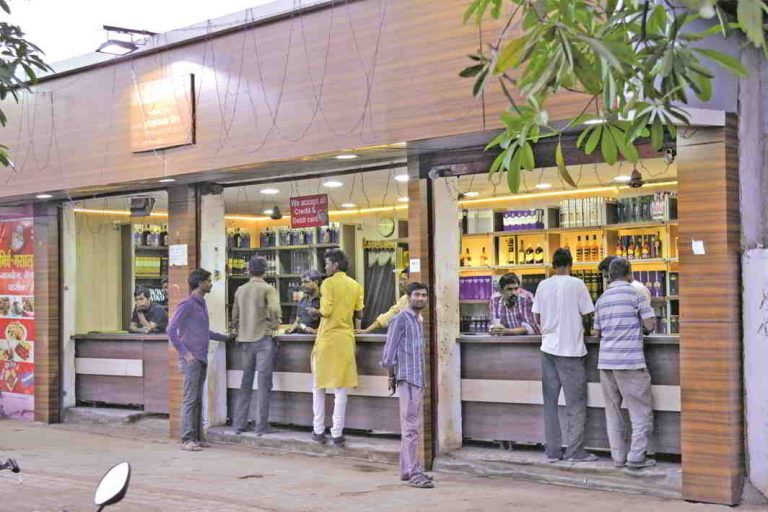
With elections in MP and Chhattisgarh next year, their CMs are gearing up to impose prohibition despite a lackadaisical response from the electorate and a thriving trade in liquor
~By Neeraj Mishra in Bhopal and Raipur
In 1926, the US government poisoned liquor caskets to prevent people from drinking when it imposed prohibition. It lasted just eight years and cost more than 10,000 lives. Though prohibition has its political uses and has been tried by several governments, it is a moot question if it actually works. After Bihar chief minister Nitish Kumar used the prohibition card to win the assembly elections in 2015, the Madhya Pradesh and Chhattisgarh governments too are now itching to try it out. Their respective CMs—Shivraj Singh Chouhan and Raman Singh—have declared that their “eventual aim is to impose prohibition albeit in a phased manner”.
In MP, Chouhan wants no liquor shops in villages with a population less than 3,000. But with over 3,500 liquor vends in the state and roughly one shop for every 15,000 population, this target may seem laughable. Also, with the Union finance ministry’s insistence on capping fiscal deficit of states to below 3 percent of the GDP, the task may seem Herculean for both states. To top it, both have a similar revenue profile with heavy dependence on excise and mining as major income sources. So prohibition may not be easy to impose.
In MP, excise revenue stands at Rs 16,000 crore from direct duty, auction of shops and a fixed license fee for bars and restaurants. It has grown at the rate of 10 percent every year since 2004. Under Chouhan, it has increased from Rs 4,300 crore in 2011-2012 to Rs 18,000 crore in 2017. That is nearly half of its total revenue of about Rs 40,000 crore.
Besides this, MP has eight breweries, 10 distilleries and 22 bottling plants which generate employment, though the bulk of it comes from running liquor vends. Each shop generates direct employment for some five persons and indirect one for another ten, who are engaged in selling eggs, peanuts and empty bottles. No wonder minister Narottam Mishra said: “Prohibition is our aim but we have to consider several other issues before we decide either way.”

And though the Supreme Court ban on liquor vends near highways led to many of these shops being displaced elsewhere, people had a problem mainly with their location rather than the sale of it. Most don’t want them in their immediate neighbourhood, though they are silent on the morality of it. Consumption patterns reveal the whole story. The annual consumption of country liquor has grown from 390 lakh litres ten years ago to 1,200 lakh litres. Indian-made Foreign Liquor (IMFL) grew from 145 lakh litres per annum during the same period to 1,100 lakh litres. Prof SRP Tripathi, a retired professor of economics, said: “Rising income and general acceptance of liquor as only a minor vice has resulted in its rapid expansion.”
Meanwhile in Chhattisgarh, though CM Raman Singh declared in the assembly that prohibition was the ultimate goal of his government, it institutionalised liquor sales by taking over all these shops. As soon as the excise policy was announced in January, the state administration was geared towards finding new shops off highways. It also trained 2,000 sales personnel to man these outlets and had five constables for each of the 800 liquor shops.
“Prohibition is our aim but we have to consider several other issues before we decide either way.”
— Narottam Mishra, minister in MP cabinet
The state has only two breweries and one distiller but the consumption of liquor of its two crore population has gone up. Almost each of the 30,000 villages in the state has at least one home-made plant to brew mahua, the local country liquor. No wonder one of the bureaucrats who was in charge of the excise department said: “It’s very difficult to impose moral discipline on an unwilling population.” With hardly any opposition to liquor, the government was forced to form a Mahila Nashamukti Sangathan to provide some credible moral policing. It posted ads urging people to give up liquor.
However, both Chouhan and Raman Singh realise that prohibition may lead to a no-gain-despite-pain situation. But with elections in both states next year, they have to be seen doing something lest the opposition take advantage of the situation. “The free rice provided to BPL families (a Chhattisgarh government scheme whereby 25 kg of rice is provided to each BPL family for a token amount of Rs 25) has led to spare incomes which are used to buy booze,” said TS Singh Deo, leader of the opposition. The Congress has promised to impose prohibition if voted to power. Even former CM Ajit Jogi’s fledgling Janata Congress has taken up the issue. However, the joke is that those who oppose prohibition by day derive their strength from it in the evenings.
Liquor trade and political patronage go hand in hand. Though liquor shops and bars are visible, almost 70 percent of the trade is conducted underground. Every liquor shop pays off everybody, from the police to the politicians on a monthly basis. If a retailer has bought a shop for Rs 1 crore a year from the government, he has to make at least Rs 3 crore to remain in the trade and make a profit out of it.
In the end, both Chouhan and Singh will have to make the uneasy choice between losing revenue and playing the game of one-upmanship.

